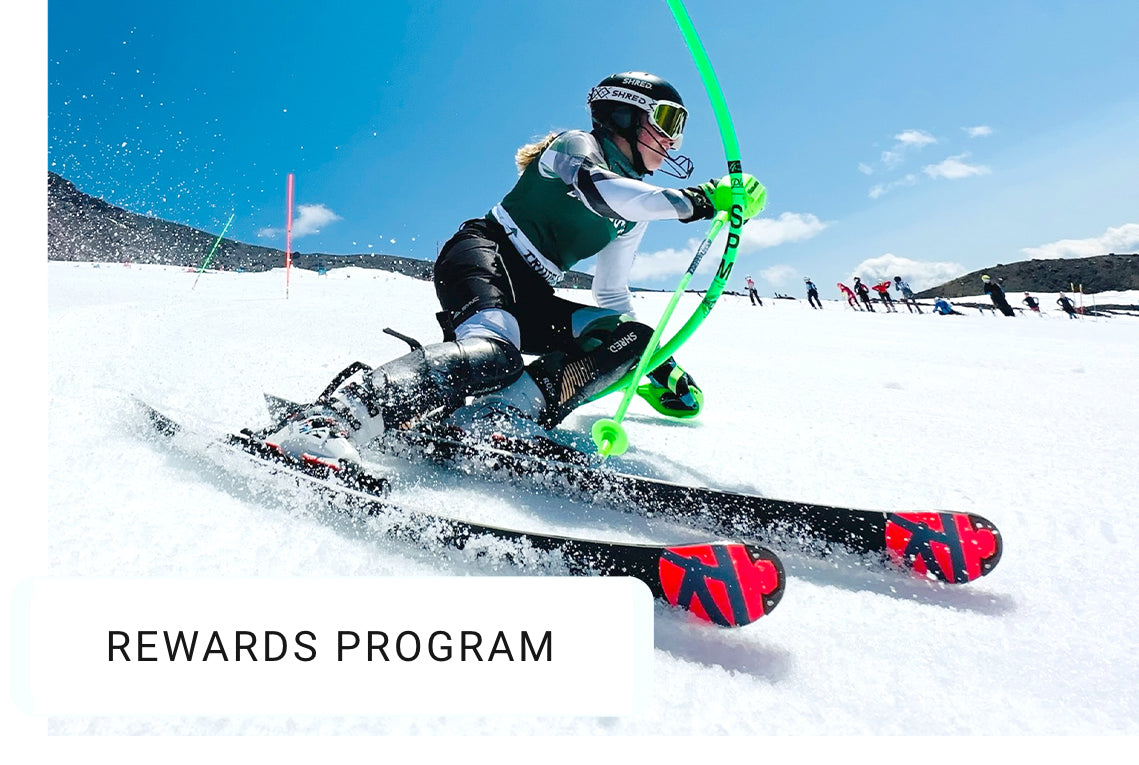It's no secret that a ski racing background builds fundamental skills that translate outside of the venue. We talked to several ex-ski racers about some specific skills that they attribute to growing up as a racer.

First up - Conor McDonald, former University of Anchorage racer and current coach as Alyeska. Conor spends his time climbing massive peaks and skiing lines in his backyard that most of us only dream about. Conor gave us these examples when asked about translating skills from racing to big mountain.
Big mountain stivot?
Slasher turns (or "slarves") are just like stivots in ski racing. They look sick in pictures but they are not fast and should be used sparingly. When you stivot in racing to control speed it looks great in slow-mo, but really you are pinching the line and slowing down. Same for slasher pow turns; it looks good to push up a poof of snow or make it look deep, but really you are throwing a bunch of snow up into your face which ends up blinding you, slowing you down, and ruing any smooth top to bottom flow you had going on. However, it's a valuable tool to have in your pocket as a racer, there are certainly situations where you need to check speed in a controlled and tight manner, like on a steep spine, but keep it in your pocket when you are just showing off.
Inspect your line!
Just like racing, you can only ski the line as well as you inspect. When you are flying down a super g or downhill, you have to know your line. You have one shot to nail that line so you are constantly visualizing. Same goes when you are skiing big terrain: inspect your lines on the way up and visualize. This way you can charge just as hard and be confident of your route.
Summer training
If you are quitting racing or retiring you need to start training for the backcountry just like you train for your race season. You need cardio and you need strength. Just because you aren't training to be the fastest skier on the mountain doesn't mean you don't need to train. You need to change your mind to try and train to be the fastest one up the mountain and the strongest one that can ski down the mountain. This is a change just like ski racing because you need a fine balance of strength to cardio.
Equipment care
You are only as good of a backcountry skier is how well you take care of your equipment. Fast race skis= fast racer. Tuning backcountry skis and maintained gear = responsible backcountry skier
Body position
Stay over your outside ski with your upper body. As you complete your turn, look down the fall line with level shoulders. This makes a great shot because you will be looking right a your photographer and your skis will be going across the hill. Just like racing, upper and lower body separation is key to complete your turn and control your speed.
The next athlete to weigh in is Chris Bivona, Ski Town All Stars founder, who grew up on an icy race course in New York. His takes are simple but clear, and resonate not only from a ski skill side, but a photography side as well, having worked with many athletes and photographers over the years.
You can't fake form
You can't fake fundamentals
Pow is easy when you learn on ice!
Well said, but we all know learning on ice translates to cold, dark, hard working mornings and nights, and not that many skiers are willing to put in the work at a young age in order to build these skills.
Another former racer who now manages Liberty Skis National Sales Team, Tim Dyer, tends to pop up in brand photography quite a bit. Tim points out a skills that not many other identify that come from a race background.
Channel energy effectively
The ability to use your skis energy and flex the amount of power you use from turn to turn means you can save energy in the backcountry. Sailing through 1000 feet of descent with ease means you have the muscle and brainpower to focus on a crux at the 1500 foot mark. Tim has seen strong athletes climb big peaks, only to watch them struggle with unnecessary energy expenditures on the way down because they lacked a solid skiing foundation.
Last, we check in with SYNC CFO Kris Ochs. Kris has channeled his energy into long backcountry days and nights, including a recent completion of the Grand Traverse race, a 40 mile overnight backcountry slog between Crested Butte and Aspen.
Train with purpose
Know your objective and work towards that. From my college race career I learned how to plan and stick to workouts when there were other more fun things going on. For instance, building up to the Grand Traverse race, we spent many days out skiing miles and miles of flat terrain when it would have been easy and more fun to go do resort laps or quicker backcountry powder laps. But it was all worth it when you are prepared come race day.
Putting skills to use
The common theme is to use past experiences to build upon your ski skills. A lot of this comes down to maximizing and utilizing the many days of hard work and training that have built a solid skiing foundation. You can't fake experience and comfort on snow.
One super important thing - if you are thinking at all about going into the backcountry, PLEASE take an avalanche education class. Every single skier here backs this up 100%. A great place to start is by checking out the links at the B.R.A.S.S. Foundation website.
Do you have tips or things you've noticed that translate from the venue to outside? Let us know in the comments!


